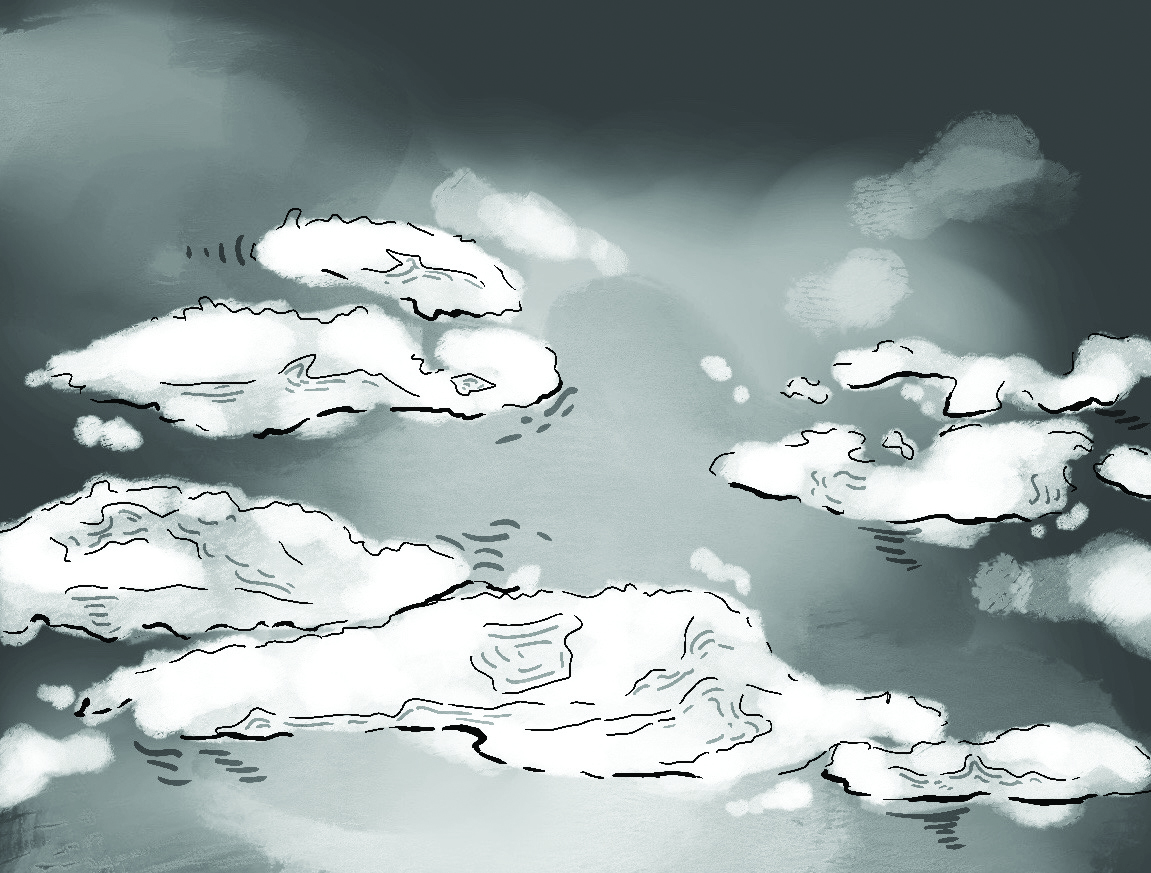An argument for looking up
September 5, 2025
 This
piece represents the opinion of the author
.
This
piece represents the opinion of the author
.
 Mia Lasic-Ellis
Mia Lasic-EllisIt’s like birding without the eye-roll reputation, like plant-ID without geographical constraints, like collecting rocks without the guilt of extraction: cloudspotting, a hobby oblivious to privilege and location.
My cloud obsession started in an unlikely way: sitting on the toilet reading Gavin Pretor-Pinney’s “The Cloudspotter’s Guide” during freshman year of high school. The day I discovered the book on my bathroom bookshelf, the outside air was cold and moist and the sky distinctly full of weather. I dangled my feet above the floor radiator from my perch. I relished the feeling of rising warm air and smiled at the thought that similar convection currents driving cloud formation were happening outside. From the heavily dog-eared pages of my cloud guide—the only text I have ever regarded as sacred—I began to extract cloud knowledge to pad my fun-fact arsenal: Lenticularis clouds look like UFOs, radiatus clouds line up in “cloud streets” fanning from the horizon and fluctus clouds look like cartoon ocean waves. Only my mom’s “Tess, are you reading in the bathroom again?” prompted me to reshelve the book at a height reachable from sitting.
Cloud knowledge arms the lay person with the power of prophecy. In 2020, I stood on the roof of my high school, the pilot turned math tutor turned cloud expert beside me, arms outstretched like a scarecrow, back to the wind, head tilted to the sky.
“Which way are the high clouds traveling?” Jodi prompted.
“To the right,” I replied.
“When your back faces the direction of the wind, but the cirrus clouds are moving to the right, you know rain is coming.”
In the midlatitudes and the northeast U.S., this pattern often appears alongside the high levels of the sky, turning milky white with Cirrus clouds, a clue that the atmosphere is becoming saturated with water. The troposphere, the part of the atmosphere where clouds form, exhibits reliable patterns that are observable without advanced equipment. Nike swoosh clouds mean rain in 24 hours. Clouds striped like a mackerel’s skin mean the same. The clouds that hover like lentils in the sky mimic the topography of the ground below. The wispy tops of thunderheads, like the curly flyaways from my ponytail, mean lightning. The cloud shaped like a dragon is probably just a cool cloud shaped like a dragon. Looking up with intention equips us Earth-dwellers with the ability to predict the best sunsets (Altocumulus clouds), brewing storms (Cumulonimbus clouds) or the end to a downpour (Mammatus clouds).
Consider looking up to be a radical act of resistance to the attention economy. Consider “skying” as the solvent to a stressful day. Consider cloudspotting to scratch the Latin taxonomy itch. Consider yourself a part of the global community who lives in the weather every day. Heck, eyes turned skyward, consider the gift of taking five minutes from your hectic day to watch a sunset melt butter yellow into inky blue.
Tess Mooney is a member of the Class of 2026.

Comments
Before submitting a comment, please review our comment policy. Some key points from the policy: